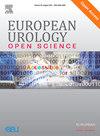How Does Routine Prostate-specific Membrane Antigen Positron Emission Tomography/Computed Tomography Modify the Current Management of Prostate Cancer? A Multidisciplinary View
IF 3.2
3区 医学
Q1 UROLOGY & NEPHROLOGY
引用次数: 0
Abstract
Background and objective
Prostate-specific membrane antigen positron emission tomography/computed tomography (PSMA-PET/CT) and new treatment modalities have expanded the possibilities for diagnosing and managing metastatic prostate cancer, but have also raised questions about their implementation in daily clinical practice. We sought consensus on definitions, preferred imaging modality for staging, and treatment selection in the era of next-generation imaging.
Methods
A modified Delphi method involved two voting rounds and a face-to-face multidisciplinary meeting with 40 Dutch prostate cancer (PCa) experts. Consensus was reached if ≥75% of the panellists chose the same option. Appropriateness was assessed by the RAND Corporation/University of California Los Angeles appropriateness method.
Key findings and limitations
There was consensus on performing metastatic screening with PSMA-PET/CT for unfavourable intermediate- or high-risk PCa. PSMA-PET/CT findings were considered feasible for determining treatment in synchronous metastatic hormone-sensitive prostate cancer, but there was no agreement on the validity of the CHAARTED criteria for interpreting the PSMA-PET/CT findings. If the PSMA-PET/CT findings led to upstaging after conventional imaging, 76% of panellists would opt for treatment intensification. In case of downstaging, 71% would choose for deintensification. Panellists would generally treat patients based on metastatic disease volume as per the CHAARTED criteria, except for bulky low-volume disease (LVD) and LVD with multiple (more than ten) bone metastases, all within the axial skeleton. This would be classified as LVD but treated as high-volume disease. Limitations are that the statements are largely consensus based and originate from a national (Dutch) perspective.
Conclusions and clinical implications
PSMA-PET/CT was considered the preferred modality for initial PCa staging, which is nowadays the standard of care in The Netherlands. The majority of panellists would incorporate PSMA-PET/CT findings for treatment planning, including intensification and deintensification, but the criteria for interpreting metastatic disease volume on PSMA-PET/CT are still uncertain.
Patient summary
A group of Dutch medical specialists discussed on how to diagnose metastatic hormone-sensitive prostate cancer and choose the most appropriate treatment for patients with this condition. It was concluded that imaging based on Prostate-specific membrane antigen (PSMA) positron emission tomography (PET) helps determine appropriate treatment options, with most experts supporting treatment adjustments based on PSMA-PET/computed tomography (CT) results. However, there is still some uncertainty about the criteria for interpreting the extent of metastatic disease with PSMA-PET/CT.
常规前列腺特异性膜抗原正电子发射断层扫描/计算机断层扫描如何改变前列腺癌的当前管理?多学科视角
背景和目的前列腺特异性膜抗原正电子发射断层扫描/计算机断层扫描(PSMA-PET/CT)和新的治疗方式扩大了诊断和治疗转移性前列腺癌的可能性,但也提出了在日常临床实践中实施的问题。我们在定义、分期首选成像方式和下一代成像时代的治疗选择上寻求共识。方法采用改进的德尔菲法对40名荷兰前列腺癌专家进行两轮投票和面对面的多学科会议。如果≥75%的小组成员选择相同的选项,则达成共识。适当性评估采用兰德公司/加州大学洛杉矶分校适当性方法。主要发现和局限性:对于不良的中高危前列腺癌,采用PSMA-PET/CT进行转移性筛查已达成共识。PSMA-PET/CT结果被认为是确定同步转移性激素敏感前列腺癌治疗的可行方法,但对于CHAARTED标准解释PSMA-PET/CT结果的有效性尚无一致意见。如果PSMA-PET/CT检查结果在常规影像学检查后导致病情加重,76%的小组成员会选择强化治疗。对于降分期,71%的患者会选择去强化。小组成员通常会根据charted标准的转移性疾病体积来治疗患者,除了体积大的低体积疾病(LVD)和多发性(超过十个)骨转移的LVD,所有这些转移都在轴骨内。这将被归类为LVD,但作为高容量疾病治疗。局限性在于这些陈述主要是基于协商一致意见,并且是从国家(荷兰)的角度出发的。结论和临床意义spsma - pet /CT被认为是早期前列腺癌分期的首选方式,这是目前荷兰的护理标准。大多数小组成员会将PSMA-PET/CT的发现纳入治疗计划,包括强化和去强化,但PSMA-PET/CT上解释转移性疾病体积的标准仍然不确定。一组荷兰医学专家讨论了如何诊断转移性激素敏感前列腺癌,并为这种情况的患者选择最合适的治疗方法。结论:基于前列腺特异性膜抗原(PSMA)正电子发射断层扫描(PET)的成像有助于确定合适的治疗方案,大多数专家支持根据PSMA-PET/计算机断层扫描(CT)结果调整治疗方案。然而,对于PSMA-PET/CT解释转移性疾病程度的标准仍然存在一些不确定性。
本文章由计算机程序翻译,如有差异,请以英文原文为准。
求助全文
约1分钟内获得全文
求助全文
来源期刊

European Urology Open Science
UROLOGY & NEPHROLOGY-
CiteScore
3.40
自引率
4.00%
发文量
1183
审稿时长
49 days
 求助内容:
求助内容: 应助结果提醒方式:
应助结果提醒方式:


